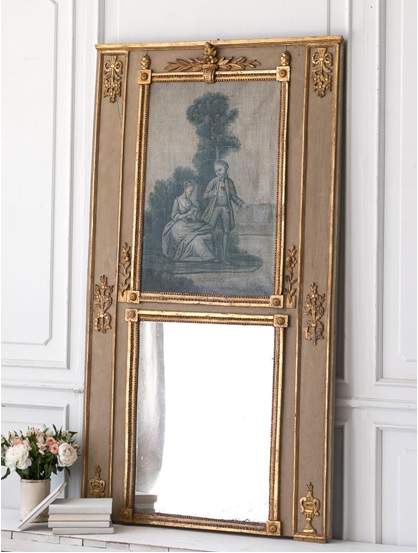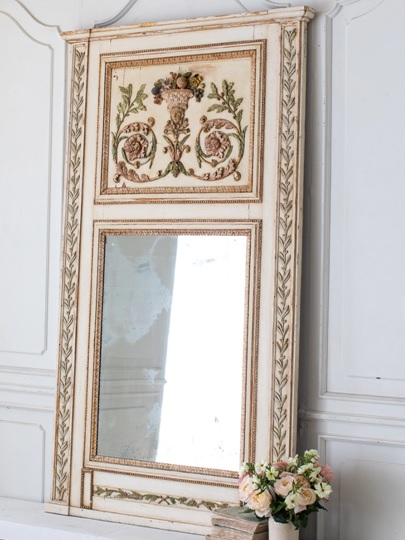A Brief History of Mirrors
Nov 22nd 2022
Mirrors seem so simple. They’re just glass after all. So it’s strange to think that mirrors are actually an invention! This means someone had to come up with the concept of a mirror and that, at one point, we never saw our reflections.
Mirrors are a huge part of our history and culture. They have shaped so many other aspects of civilization, from art and archaeology to psychology and technology. But how did they come to be?
There’s a myth that a woman from the ancient Himalayas rested at a brook to ponder her course. But when she looked into the pool of water she saw another woman. It was her! This is when reflections were first discovered.
Of course, there is no real proof of this story. There is physical evidence of mirrors, however, as early as ancient Egypt, the year 2900 BC. At the time, the mirrors were made of polished bronze and were flat and round. The handles were wood, metal, or ivory. In 2000 BC, humans in China were also using bronze mirrors.
Seemingly intrigued by these handheld mirrors, ancient Greek civilizations hundreds of years later started to experiment with mirrors that would show an entire body. They were still small at this time but didn’t need to be held. Instead, they had a stand-up handle or an eyelet for hanging. They also created compact mirrors that were within a metal cover.
At this time in history, gods were often etched onto the mirrors. This includes Aphrodite, the goddess of beauty and love. Mirrors also had silver, gold, and gems within the design. It was clear that mirrors were highly regarded items, often costing a lot.
In Japan, bronze mirrors were imported from China in 300 AD. These mirrors were associated with the sun goddess Amaterasu. Mirrors were seen as sacred, with Amaterasu’s story stating that his grandson gave him a sacred mirror to “access the divine sun.” People who owned mirrors claimed they warded off evil spirits and helped them speak with the gods.
As time went on, mirror making became a pretty common practice by the Romans. But making mirrors came to a halt in the Dark Ages (as did many other things). You won’t find many mirrors that were made around that time.
In the third century, glassblowing started to take off. Early glass mirrors were found in Egyptian cultures. But making glass mirrors was really difficult at the time and was a laborious process. The resulting reflection was also quite dim. But humans stuck with this whole glass concept and started trying again in 500 AD with more clear reflections by using silver-mercury amalgams.
As science started to pick up during the Age of Reason, mirror making started improving. This was around the 12th century. A guild of mirror makers was formed in 1373. They experimented with tin, silver, and other elements, like rock crystal. These were very rare and costly gemstones, making the mirrors quite prized.
Framed mirrors became quite sought after. Creating these mirrors was so important that guildsmen were sentenced to death if they shared trade secrets. Wealthy women were the biggest supporters of the industry, with aristocratic ladies often requiring one at all times. Glass workers were shipped to various countries to create mirrors for royalty.

Mirrors also became a big part of the art world, meaning it’s not only for vanity. Mirrors have been a big part of art history as well. Leonardo da Vinci called the mirror the “master of painters” since artists could look at the reflection in the mirror as a reference for their paintings.
With mirrors seen as such an impactful part of art and beauty, it wasn’t uncommon to see mirrors written into wills and considered “a family’s most cherished possession,” said 18th century design authority of the Furniture Library, Charles Sutton. Mirrors were being implemented into furniture, including into vanities and dressers. Mirrors were also highly stylized, with unique shapes, designs, and details.
Now, it’s quite shocking to go into a home or public bathroom and not see a mirror. We often take it for granted that we can see our reflection whenever we brush our teeth, do our hair, put on makeup, or try on a new outfit. They are in dressing rooms, in restaurants… You almost can’t escape your reflection at this point.
Looking for antique mirrors for sale? Eloquence has a collection of stunning mirrors reminiscent of royalty. We have a unique collection of trumeau mirrors, a unique type of historical mirror that will stand out in any room.
What is a trumeau mirror?

Trumeau mirrors are decorative wall mirrors that feature a painted or carved panel for added beauty. Some of our trumeau mirrors are simple and elegant, featuring white paint and a detailed carving, while others have old paintings in a detailed frame.


